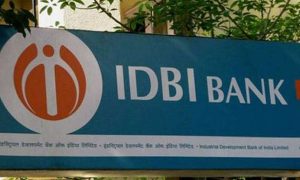While both term insurance and home loan protection plan are aimed at covering your home loan, they are different in several ways.
Owning a home is a dream for crores of middle-class Indians. However, properties are expensive these days — even in a tier-2, -3 location — and people depend on home loans to see their dreams come true.
Read More:-Cyclone Michaung Update: List Of 54 Trains Cancelled By East Coast Railway
Let’s say you have taken a loan and are in the process of repayment. Medical emergencies are never predictable, and so is one’s demise. In such an event, can your family cope with your loss and also bear the burden of the home loan? Could that financial liability be lifted off their shoulders?
It is in these circumstances that a home insurance policy or term insurance comes in handy.
What is a home loan insurance policy?
Home loan insurance, or a term policy, is an option for your family to repay the loan in case of your demise during the loan repayment period. It helps your family by not letting them fall into a debt trap, by repaying the remaining loan amount to the lender.
Read More: From Aadhaar To Demat, Money Deadlines Alert! Key Dates To Remember In December 2023
Home insurance is mainly of two types — Term Insurance and Home Loan Protection Plan (HLPP). While both products are aimed at covering your home loan, they are different in several ways.
Term insurance vs home loan protection plan (HLPP)
The basic difference between a term insurance policy and an HLPP is that in term insurance, the sum insured remains unchanged, while in HLPP, the sum insured will progressively come down as one repays the home loan amount.
It means that in an HLPP, the insurance company will pay only the outstanding loan amount to the deceased borrower’s family, while in term insurance, the family of the insurer will get the entire sum insured.
Read More: ICICI Bank links RuPay credit cards with UPI transactions. Here’s how you can use it
The policyholder needs to pay regular monthly instalments in a term insurance policy, while an HLPP requires a one-time payment. A term plan is cheaper than an HLPP. For example, if the premium of a Rs 1 crore term plan is Rs 8,000-15,000 a year, for the same size of cover in HLPP, it will be around Rs 50,000.
A term policy also helps the deceased’s family in repaying other loans that are due and works as financial aid for the family. Now, some of the term plans are also offering maturity benefits if the insurer outlives the plan.
In a term plan, one can increase the cover based on one’s financial responsibility; in such a case, you have to pay a higher premium. On the other hand, since you have already paid the premium while purchasing an HLPP plan, you can’t increase the coverage.
A term plan can also be converted into a life insurance policy with an extra premium, while an HLPP is primarily focused on home loan insurance. Compared with an HLPP, term insurance won’t cost you much if you invest money and get returns on it.
Read More: Petrol, Diesel Fresh Prices Announced: Check Rates In Your City On December 03
For instance, person ‘A’ purchases an HLPP of Rs 60,000 for 20 years and person ‘B’ purchases term insurance for 20 years and pays a premium of Rs 5,000. If ‘B’ invests the remaining Rs 55,000 in lumpsum, say in a mutual fund, where the average annual return is 12 per cent, his/her estimated returns in 20 years will be Rs 4,75,546.
Since illness is almost always the primary reason for the death of a borrower, it is essential that home loan insurance also cover health-related challenges. If you want disabilities, terminal illnesses, fire accidents, man-made hazards, and joblessness, too, to be covered, you have to purchase add-ons in an HLPP plan.
These days, term plans also cover such health-related challenges, but under the condition of extra premiums.
Read More: From Aadhaar To Demat, Money Deadlines Alert! Key Dates To Remember In December 2023
Let’s say you’ve been let off from your job by your employer; HLPP add-ons provide the facility to cover EMI payments of up to three to six months in such a case. It will also ensure that you do not face penalties from the lender for missing out on an EMI when you lose a job and your account depletes.
Risk mitigation for lenders?
Many banks and financial institutions get a lot of benefits through home loan interest rates. If a borrower fails to pay the loan amount on time, it affects their regular source of income.
From the lender’s point of view, home loan insurance works as a risk mitigation factor as it ensures their debt doesn’t turn into a bad loan. It pays the expected amount to the lender on time, thus making their source of income regular.
So, how affordable and easily accessible are these insurance covers? Since these plans are long-term, insurance companies offer them at affordable rates. The premium depends on the total cover of the insurance and add-ons you purchase along with them. The premium can vary from company to company since they provide different facilities in their plans.
In a nutshell, it is advisable that you purchase home loan insurance to help your family repay the loan in case of your death. However, do check with your financial advisor on how soon you can get one, and thus, safeguard your family’s future.





































